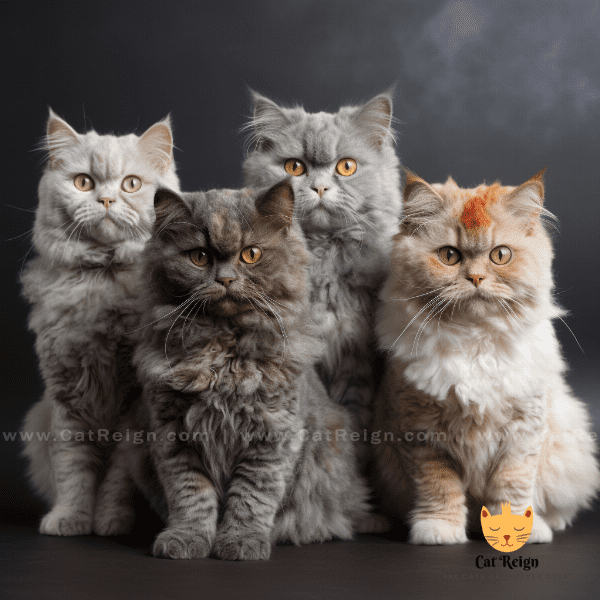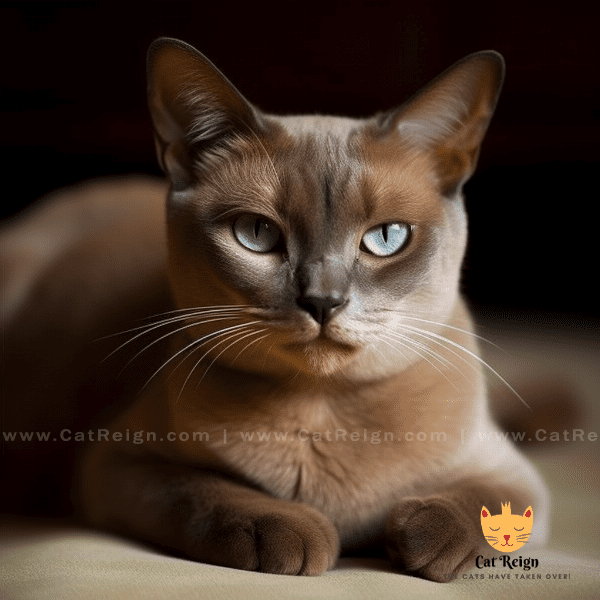Table of Contents
- Origins and History of the Balinese Cat
- Physical Characteristics and Appearance
- Temperament and Personality Traits
- Health and Care Requirements
- Feeding and Nutrition for Balinese Cats
- Training and Socialization Tips
- Balinese Cat Breeding and Genetics
- Common Behavioral Issues and Solutions
- Fun Activities to Do with Your Balinese Cat
- Conclusion: Why the Balinese Cat Makes a Great Pet
Origins and History of the Balinese Cat
The Balinese cat is a long-haired breed of domestic cat that originated in the United States in the 1950s. The breed is named after the island of Bali in Indonesia, where it was believed to have originated due to its resemblance to the Siamese cat, which was known to have been brought to Bali by early traders.
The Beginnings of the Balinese Cat Breed
The Balinese cat is the result of a natural genetic mutation that occurred in Siamese cats. The mutation, which causes the cats to have long hair, was first observed in the Siamese cat breed in the 1920s. However, it was not until the 1950s that breeders began intentionally breeding for the long-haired trait in Siamese cats, which eventually led to the development of the Balinese cat breed.
The Balinese Cat’s Relation to the Siamese Cat
The Balinese cat is closely related to the Siamese cat, and in fact, many people mistake the two breeds for one another. The Balinese cat has the same sleek, elegant body shape and striking blue eyes as the Siamese cat, but it has a longer, silky coat.
Balinese Cat’s Popularity and Recognition
The Balinese cat quickly gained popularity among cat lovers due to its unique appearance and friendly personality. In 1979, the Cat Fanciers’ Association (CFA) recognized the Balinese cat as a distinct breed. Today, the Balinese cat remains a popular breed among cat enthusiasts and is recognized by all major cat registries.
Summary
In summary, the Balinese cat is a long-haired breed of domestic cat that originated in the United States in the 1950s as a result of a natural genetic mutation in Siamese cats. The breed’s resemblance to the Siamese cat led to its name, and it quickly gained popularity due to its unique appearance and friendly personality. The Balinese cat is closely related to the Siamese cat and is recognized as a distinct breed by all major cat registries.

Physical Characteristics and Appearance
The Balinese cat is a medium-sized, long-haired breed of cat with a distinctive and elegant appearance. Here are some of the key physical characteristics of the Balinese cat:
Body Type
The Balinese cat has a slim and graceful body type that is similar to that of the Siamese cat. They are athletic and muscular with long, slender legs that are well-proportioned to their body size.
Coat
One of the most distinctive features of the Balinese cat is its long, silky coat. The coat is fine and lustrous, and it has a beautiful sheen to it. The coat is medium length and does not mat easily. It requires regular brushing to keep it looking its best.
Eyes
The Balinese cat has striking blue eyes that are almond-shaped and set at a slight angle. Their eyes are expressive and intelligent-looking, which is a reflection of their lively personality.
Ears
The Balinese cat has large, pointed ears that are set high on their head. Their ears are one of their most distinctive features and give them a regal appearance.
Summary
In summary, the Balinese cat is a medium-sized, long-haired breed of cat with a slim and graceful body type. They have a fine and lustrous coat that comes in a variety of colors and has points on their ears, tail, and face. The Balinese cat has striking blue eyes and large, pointed ears that give them a regal appearance.

Temperament and Personality Traits
The Balinese cat is known for its friendly and outgoing personality. Here are some of the key temperament and personality traits of the Balinese cat:
Affectionate
The Balinese cat is a very affectionate breed and loves to be around people. They are known for their ability to form strong bonds with their owners and are often referred to as “velcro” cats because of their desire to be close to their humans.
Playful
The Balinese cat is an active and playful breed that enjoys interactive playtime with their owners. They are known for their love of toys and will often play fetch or chase after toys for hours on end.
Vocal
Like their Siamese ancestors, the Balinese cat is a vocal breed that likes to communicate with their humans. They have a distinctive meow that is more of a yowl than a typical cat’s meow, and they are not afraid to use it to get their owner’s attention.
Sociable
The Balinese cat is a sociable breed that gets along well with other cats and even dogs. They are not typically territorial and are known for their ability to adapt to new environments and situations.
Summary
In summary, the Balinese cat is an affectionate, playful, and vocal breed that is also intelligent and sociable. They love to be around people and can form strong bonds with their owners. The Balinese cat is an active breed that enjoys interactive playtime and mental stimulation.
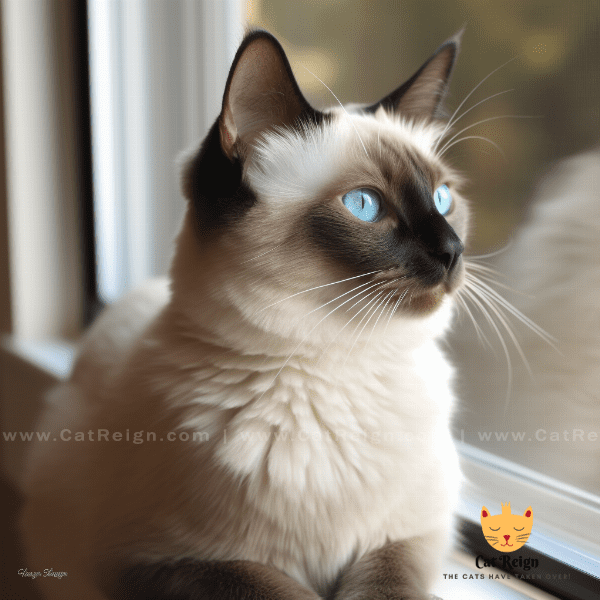
Health and Care Requirements
The Balinese cat is generally a healthy breed with a life expectancy of around 12-16 years. However, like all cats, they are prone to certain health issues. Here are some health and care requirements to keep in mind for the Balinese cat:
Grooming
The Balinese cat has a long, silky coat that requires regular grooming to keep it looking its best. They should be brushed at least once a week to prevent matting and to distribute oils throughout their coat. In addition, their ears should be checked regularly and cleaned as needed.
Nutrition
The Balinese cat requires a balanced diet to maintain optimal health. It is recommended to feed them a high-quality, protein-rich cat food that is appropriate for their age and activity level. It is important to avoid overfeeding the Balinese cat as they are prone to obesity.
Exercise
The Balinese cat is an active breed that requires regular exercise to maintain their physical and mental health. They should have access to toys and climbing structures to keep them active and engaged.
Health Issues
The Balinese cat is generally a healthy breed but may be prone to certain health issues, including:
- Respiratory problems, such as asthma or bronchial disease
- Dental issues, such as gum disease or tooth decay
- Eye problems, such as glaucoma or cataracts
Veterinary Care
The Balinese cat should receive regular veterinary care, including annual check-ups and vaccinations. It is important to take them to the vet if you notice any changes in their behavior, appetite, or physical appearance.
Summary
In summary, the Balinese cat is a generally healthy breed that requires regular grooming, a balanced diet, and exercise to maintain their health. They may be prone to certain health issues, and it is important to provide them with regular veterinary care. The Balinese cat is an active breed that enjoys toys and climbing structures to keep them engaged.
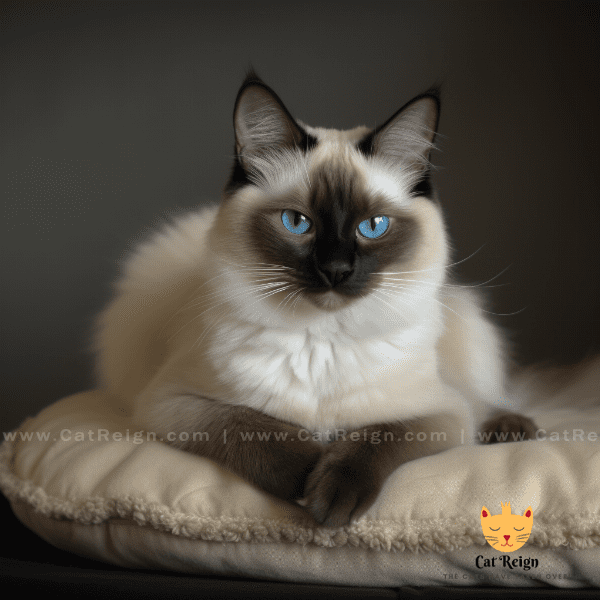
Feeding and Nutrition for Balinese Cats
Protein-Rich Diet
The Balinese cat is an active and muscular breed that requires a diet high in protein to maintain their health. Look for cat food that contains high-quality sources of protein, such as chicken, fish, or turkey. Avoid cat food that contains fillers or by-products, as these are not as nutritious for your cat.
Age-Appropriate Diet
It is important to provide your Balinese cat with an age-appropriate diet. Kittens require a diet that is higher in calories and protein to support their growth and development, while older cats may require a diet that is lower in calories to maintain a healthy weight.
Avoid Overfeeding
The Balinese cat has a tendency to overeat, which can lead to obesity and health issues. It is important to measure out your cat’s food and avoid leaving food out all day. Stick to a feeding schedule and provide your cat with appropriate portion sizes.
Hydration
The Balinese cat requires access to fresh, clean water at all times. It is important to provide your cat with a water bowl that is cleaned regularly and refilled daily.
Treats
Treats can be a great way to bond with your Balinese cat and reward good behavior. However, it is important to provide treats in moderation and avoid overindulging your cat, which can lead to weight gain.
Summary
In summary, feeding and nutrition are important aspects of keeping your Balinese cat healthy and happy. It is important to provide them with a protein-rich diet that is appropriate for their age and activity level. Avoid overfeeding and provide fresh water at all times. Treats can be given in moderation to reward good behavior.
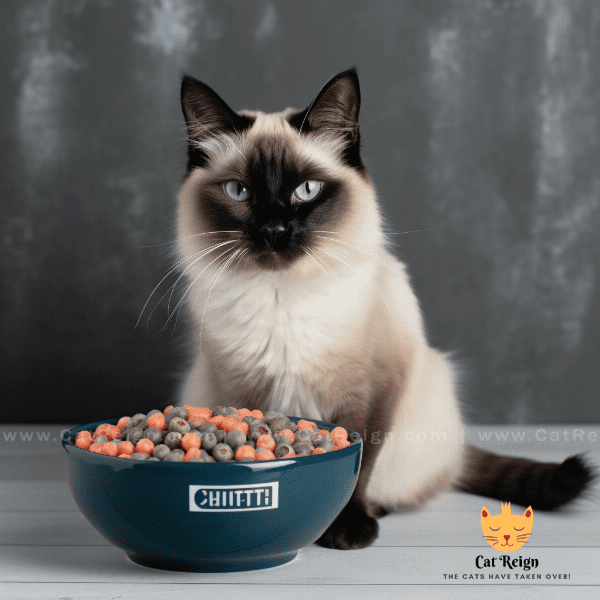
Training and Socialization Tips
Training and socialization are important aspects of keeping your Balinese cat happy and well-behaved. Here are some tips to help you train and socialize your Balinese cat:
Positive Reinforcement
The Balinese cat responds well to positive reinforcement training. Use treats and praise to reward good behavior and avoid punishment or negative reinforcement.
Litter Box Training
The Balinese cat is an intelligent breed that is easy to litter box train. Show your cat where the litter box is located and provide a clean, accessible area for them to use. Clean the litter box regularly and provide multiple boxes if you have multiple cats.
Socialization
The Balinese cat is a social breed that enjoys being around people and other animals. Introduce your cat to new people and animals gradually, using positive reinforcement and treats to encourage good behavior. Provide plenty of toys and climbing structures to keep them entertained.
Leash Training
The Balinese cat can be trained to walk on a leash, but it requires patience and consistency. Start by getting your cat used to wearing a harness and then gradually introduce them to the outdoors. Use treats and positive reinforcement to encourage them to walk on the leash.
Training for Behavior Issues
The Balinese cat can be prone to behavior issues, such as scratching or jumping on furniture. Use positive reinforcement training to redirect their behavior to appropriate areas, such as a scratching post or cat tree. Provide plenty of toys and attention to keep them entertained and stimulated.
Summary
In summary, training and socialization are important aspects of keeping your Balinese cat happy and well-behaved. Use positive reinforcement and treats to encourage good behavior and avoid punishment. Litter box training is easy with the Balinese cat, and they enjoy socialization with people and other animals. Leash training is possible with patience and consistency. Redirect unwanted behavior using positive reinforcement training and provide plenty of toys and attention.
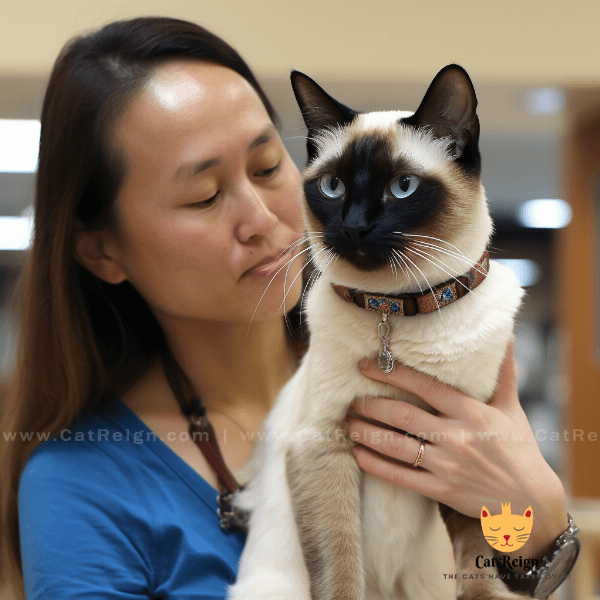
Balinese Cat Breeding and Genetics
Breeding and genetics play an important role in the development and health of the Balinese cat breed. Here are some key things to know About balinese cat breeding and genetics:
Breeding History
The Balinese cat was developed in the 1950s by breeding long-haired Siamese cats with other long-haired breeds, such as the Angora and Himalayan cats. The breed was recognized by the Cat Fanciers’ Association in 1979.
Coat Color and Pattern
The Balinese cat comes in a variety of colors and patterns, including seal, blue, chocolate, lilac, red, cream, and tortoiseshell. They have points on their ears, tail, and face, which means that these areas are darker than the rest of their body. The rest of their body is a lighter shade of the same color.
Genetics of Long Hair
The Balinese cat’s long hair is caused by a recessive gene that must be inherited from both parents. This means that not all kittens in a litter will have long hair, and two short-haired Balinese cats can produce long-haired kittens if they both carry the recessive gene.
Health Concerns in Breeding
Breeding Balinese cats requires careful attention to health concerns to avoid passing on genetic disorders to kittens. Some health concerns in Balinese cats include respiratory problems, dental issues, and eye problems. Breeders should screen their cats for these issues and avoid breeding cats with a higher risk of passing them on to their offspring.
Summary
In summary, the Balinese cat breed was developed in the 1950s by breeding long-haired Siamese cats with other long-haired breeds. The breed comes in a variety of colors and patterns, with points on their ears, tail, and face. The long hair is caused by a recessive gene that must be inherited from both parents. Health concerns should be carefully considered in breeding to avoid passing on genetic disorders to kittens.

Common Behavioral Issues and Solutions
The Balinese cat is a friendly and outgoing breed, but they can still experience common behavioral issues. Here are some common issues and solutions to help keep your Balinese cat happy and well-behaved:
Scratching
The Balinese cat is a natural scratcher, and they may scratch furniture or other household items if they don’t have an appropriate scratching post or pad. Provide multiple scratching options in different locations and encourage your cat to use them using positive reinforcement.
Meowing
The Balinese cat is a vocal breed that may meow excessively if they are bored or anxious. Make sure your cat has plenty of toys and playtime to keep them stimulated. If excessive meowing continues, consult with your veterinarian to rule out any underlying health issues.
Litter Box Issues
The Balinese cat is generally easy to litter box train, but they may develop issues if the litter box is not clean or accessible. Make sure the litter box is cleaned regularly and that there are enough litter boxes for multiple cats. If your cat continues to have litter box issues, consult with your veterinarian to rule out any underlying health issues.
Aggression
The Balinese cat is generally a friendly and sociable breed, but they may become aggressive if they are feeling threatened or stressed. Identify the source of the aggression and work to remove it if possible. Provide your cat with plenty of toys and attention to keep them stimulated and help prevent aggressive behavior.
Summary
In summary, the Balinese cat is a friendly and outgoing breed that can experience common behavioral issues. Scratching, meowing, litter box issues, and aggression are some common issues that can be addressed with appropriate solutions. Provide multiple scratching options, ensure the litter box is clean and accessible, and remove sources of stress that may be causing aggression. Consult with your veterinarian if issues persist.

Fun Activities to Do with Your Balinese Cat
The Balinese cat is an active and playful breed that loves to engage in interactive playtime with their humans. Here are some fun activities you can do with your Balinese cat:
Toy Time
The Balinese cat loves toys, especially interactive ones that require their participation. Provide your cat with toys such as feather wands, laser pointers, and puzzle toys. You can also create DIY toys using everyday items, such as paper bags and cardboard boxes.
Climbing and Perching
The Balinese cat loves to climb and perch on high surfaces, such as cat trees and shelves. Provide your cat with plenty of climbing structures and perches to keep them entertained and stimulated. You can also create a DIY cat tree using materials such as PVC pipes and carpet.
Outdoor Time
If it is safe and appropriate, you can take your Balinese cat outside for supervised playtime. Use a harness and leash to ensure their safety and explore your backyard or a nearby park. You can also create an outdoor enclosure to provide your cat with a safe and stimulating environment.
Training Time
The Balinese cat is an intelligent breed that can be trained to do tricks and respond to commands. Use positive reinforcement training to teach your cat tricks such as sit, stay, and come. You can also teach them to walk on a leash or play games such as fetch.
Playtime with Other Cats
If you have multiple cats, provide them with opportunities to play and interact with each other. The Balinese cat is a sociable breed that gets along well with other cats, and playtime can provide them with exercise and mental stimulation.
Summary
In summary, the Balinese cat is an active and playful breed that enjoys interactive playtime with their humans. Toy time, climbing and perching, outdoor time, training time, and playtime with other cats are some fun activities you can do with your Balinese cat. Provide them with toys, climbing structures, and outdoor enclosures to keep them entertained and stimulated. Use positive reinforcement training to teach them tricks and commands.
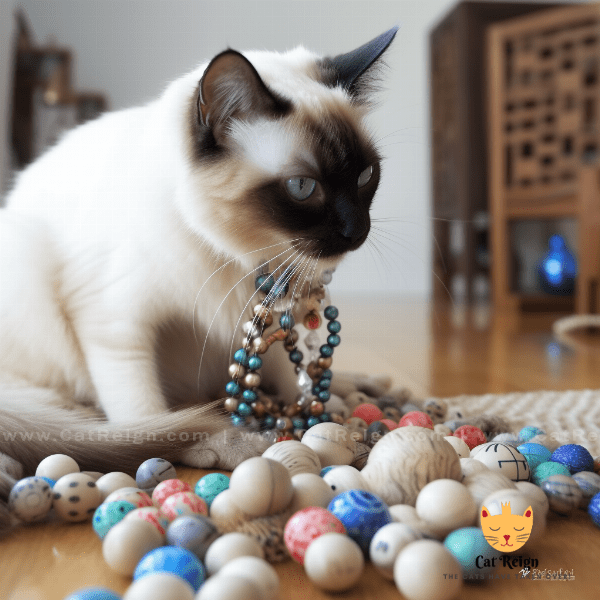
Conclusion: Why the Balinese Cat Makes a Great Pet
The Balinese cat is a wonderful breed that makes a great pet for many reasons. Here are some reasons why you should consider adding a Balinese cat to your family:
Affectionate and Sociable
The Balinese cat is a friendly and affectionate breed that loves to spend time with their humans. They are social cats that enjoy playing and interacting with people and other cats.
Intelligent and Trainable
The Balinese cat is an intelligent breed that can be trained to do tricks and respond to commands. They are eager to please and respond well to positive reinforcement training.
Playful and Active
The Balinese cat is a playful and active breed that loves to play with toys and climb on high surfaces. They enjoy interactive playtime with their humans and get along well with other cats.
Low Maintenance Grooming
The Balinese cat’s long hair requires minimal grooming, as it is less prone to matting and tangling than other long-haired breeds. Regular brushing and nail trimming is all that is needed to keep them looking their best.
Health and Longevity
The Balinese cat is generally a healthy breed with a long lifespan. With proper care and nutrition, they can live up to 20 years or more.
In summary, the Balinese cat is a wonderful breed that makes a great pet for many reasons. They are affectionate, sociable, intelligent, trainable, playful, and low-maintenance when it comes to grooming. They also have a long lifespan and are generally a healthy breed. Consider adding a Balinese cat to your family for years of love and companionship.


